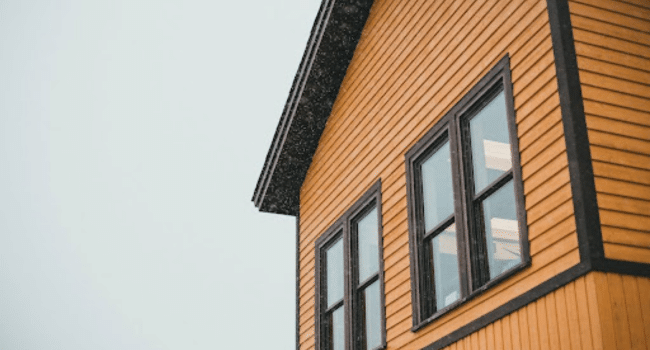Table of Contents
Board and batten siding is one of the most popular siding alternatives for homes because of its classic charm and unique style. Board and batten siding, which has its roots in ancient building methods, has developed into a flexible choice that enhances the charm and character of many architectural types. This article will discuss the main distinctions between board and batten siding, as well as its advantages, installation method, and homeowner considerations.
Composition and Structure
The design of board and batten siding is typified by the installation of small strips (called battens) across the gaps between the wide boards. The battens, which are commonly 1 to 3 inches wide, conceal the seams that connect the boards, while the boards, which are often mounted vertically, range in width from 6 to 12 inches. This alternating pattern gives the home’s facade depth and an eye-catching texture.
Historical Origins
With origins in classic American and European architecture, board and batten siding has a long and illustrious history spanning several centuries. Board and batten siding was first widely utilized in both residential and business buildings as an affordable and useful siding alternative for outbuildings, barns, and rural dwellings. Its longevity, adaptability to many architectural styles, and rustic beauty are the reasons for its lasting popularity.
Aesthetic Appeal
The unique visual attractiveness of board and batten siding is one of the main factors influencing homeowner decisions. The vertical lines made by the battens and boards give the outside-of-the-house visual appeal and dimension, giving it a feeling of depth and personality. Board and batten siding offers flexibility and variety in design, making it a great fit for both classic and modern architectural designs.
Durability and Maintenance
Siding made of board and batten is renowned for its endurance and toughness when built and maintained correctly. The danger of rot and water damage is decreased by the vertical position of the boards and battens, which helps drain moisture better than horizontal siding. Furthermore, board and batten design makes it easier to accommodate the expansion and contraction that naturally occurs with wood siding. Over time, board and batten siding’s integrity and look may be preserved with regular care, such as routine washing and sealing.
Installation Process
To achieve an expert finish, installing boards and batten siding needs meticulous attention to precision and attention to detail. Typically, the procedure entails sizing the battens and boards, covering the external walls with a weather-resistant coating, and using screws or nails to fasten the lumber vertically to the studs. Then, to hide the seams and improve the overall appearance, the battens are put in place over the spaces between the boards. Siding must be installed correctly to guarantee that it is stable, waterproof, and aesthetically pleasing.
Cost Considerations
Even though board and batten siding have several advantages, you should weigh the costs and benefits before choosing. Because it requires greater supplies and effort to install than typical horizontal siding, board and batten siding may be more expensive. For many homes, though, the initial cost may be justified due to the board and slat siding’s durability over time and aesthetic appeal.
Sustainability and Environmental Impact
For homeowners who care about the environment, board and batten siding may be a sustainable option in addition to its practical and aesthetic advantages. Board and batten siding may lessen the environmental effect of building a home when it comes from environmentally friendly sources or is made using salvaged wood or synthetic wood components. Furthermore, wood siding reduces waste and promotes a circular economy because it is recyclable and biodegradable at the end of its useful life. Selecting board and batten siding for your house allows you to take advantage of the timeless beauty and strength of this siding option while also helping to conserve the environment.
Conclusion
A classic and adaptable choice for homeowners looking to improve the look of their houses is board and batten siding. Its unusual vertical shape, historical roots, robustness, and visual allure make it a well-liked option for many different architectural types. Board & batten siding gives longevity, beauty, and character that may change the outside of your home for years to come, whether you’re building a new home or remodeling an existing one.
